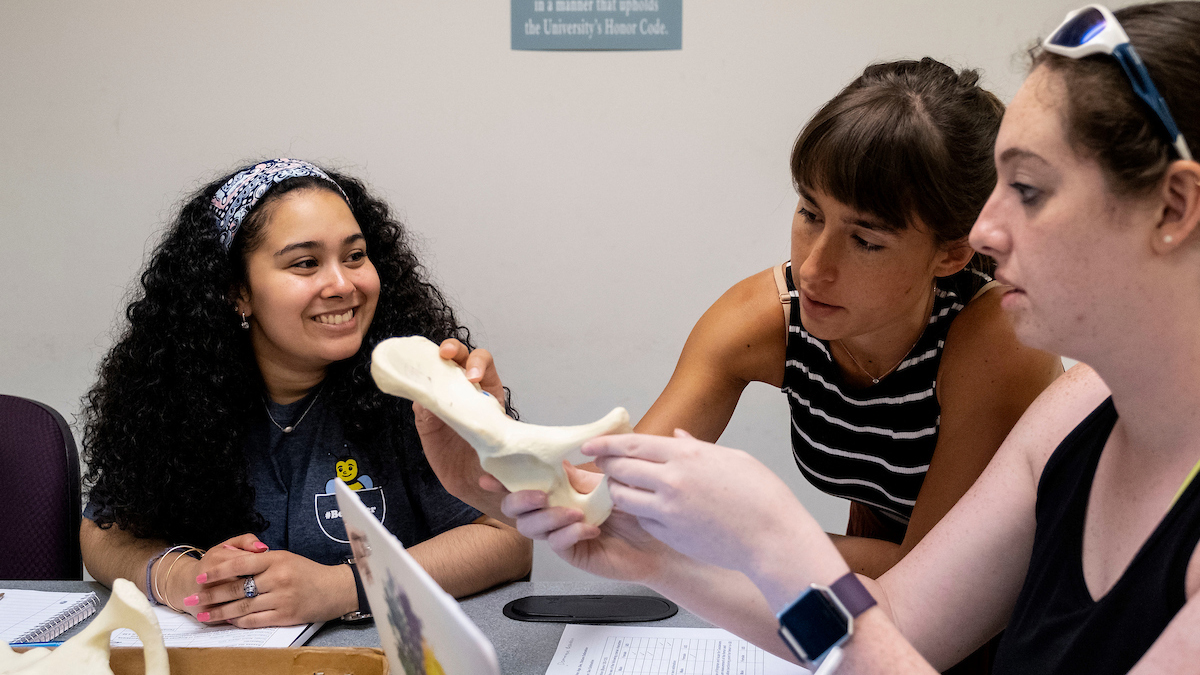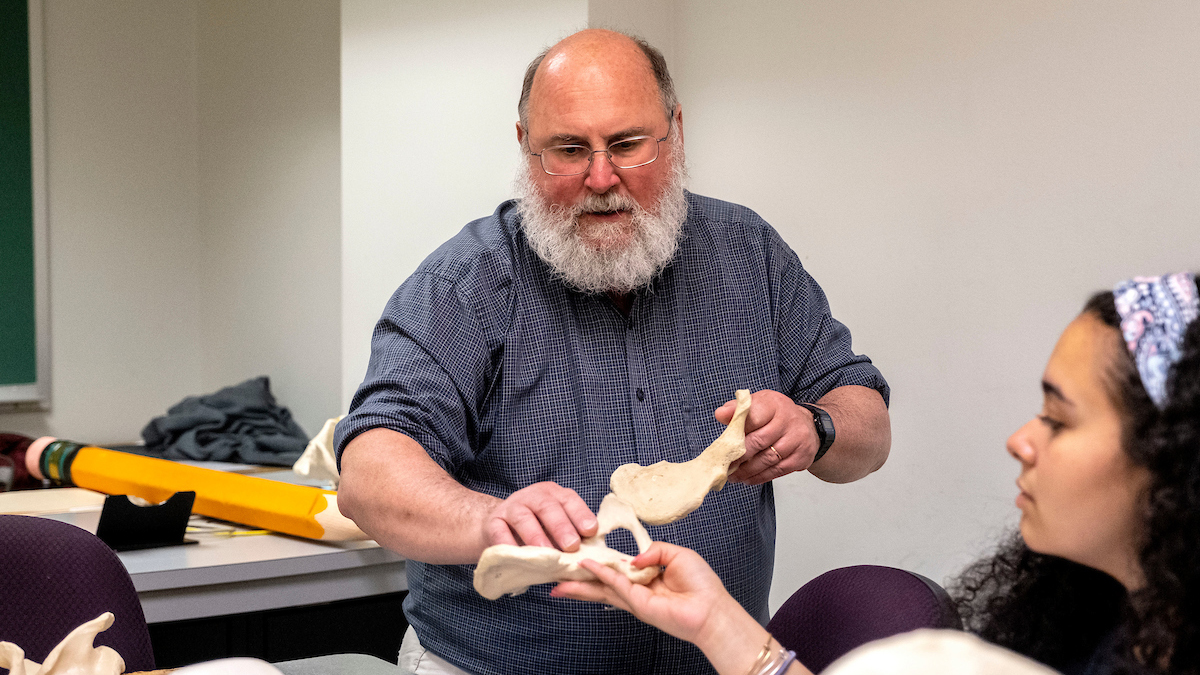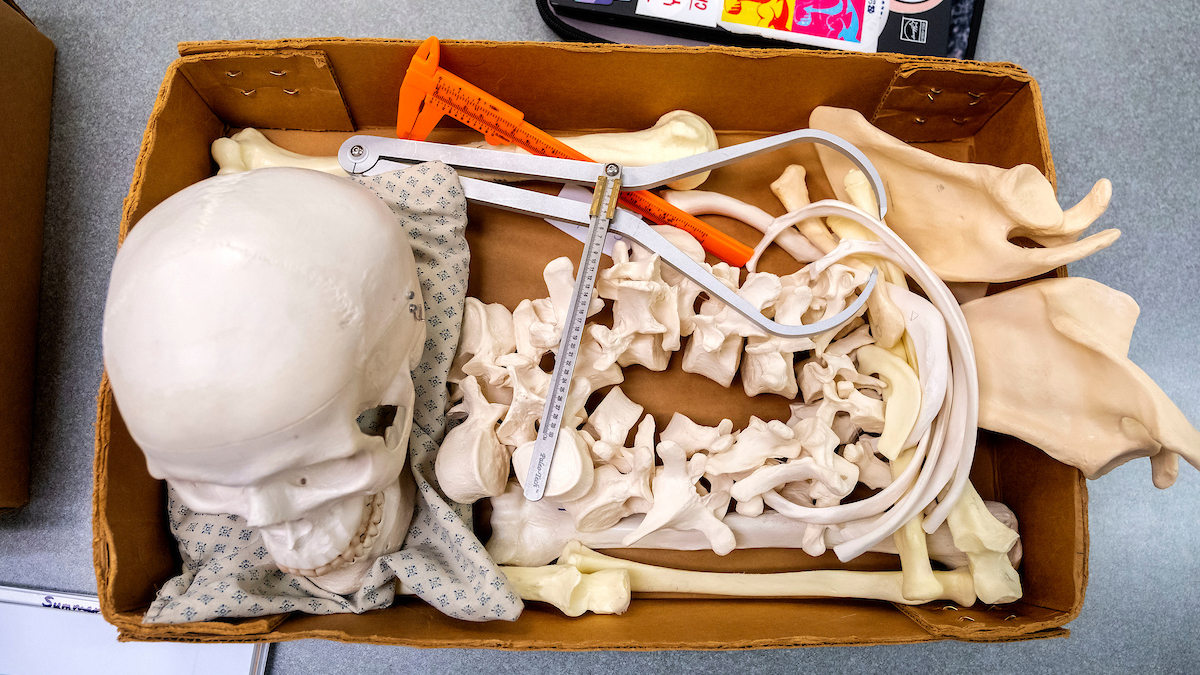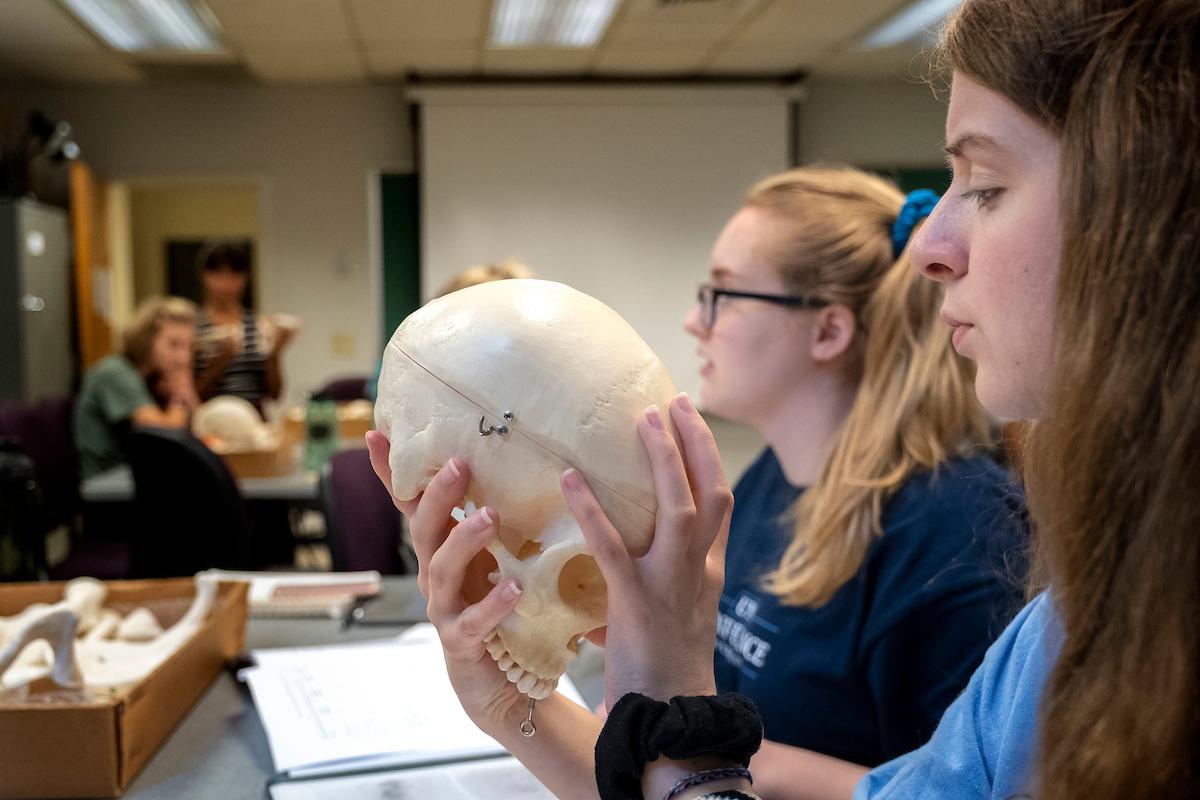Written in bone
This three-week Maymester course teaches students about skeletal analysis and its role in contemporary forensic cases.

You’ve seen it on TV, but these students are learning forensic lab methods in practice.
Written in Bone: CSI and the Science of Death Investigation from Skeletal Remains is a three-week Maymester course offered by Summer School that teaches students how to map and recover the elements of a crime scene.

Anthropology professor Dale Hutchinson leads the course, which combines laboratory training, field projects, lectures, films, discussion and student presentations to teach students about the science of human skeletal analysis.

Using model bones and measurement instruments, students learn to how forensic anthropologists estimate the sex, age range, stature and other identifying features of a victim.

As a forensic anthropologist, Hutchinson has consulted with law enforcement officials to help solve several crimes. He shares this knowledge with his students, helping them understand the science behind analyzing physical evidence.

Whether or not they pursue careers in forensic anthropology, it’s safe to say these students won’t look at their favorite police procedural dramas or true crime podcasts in quite the same way.




